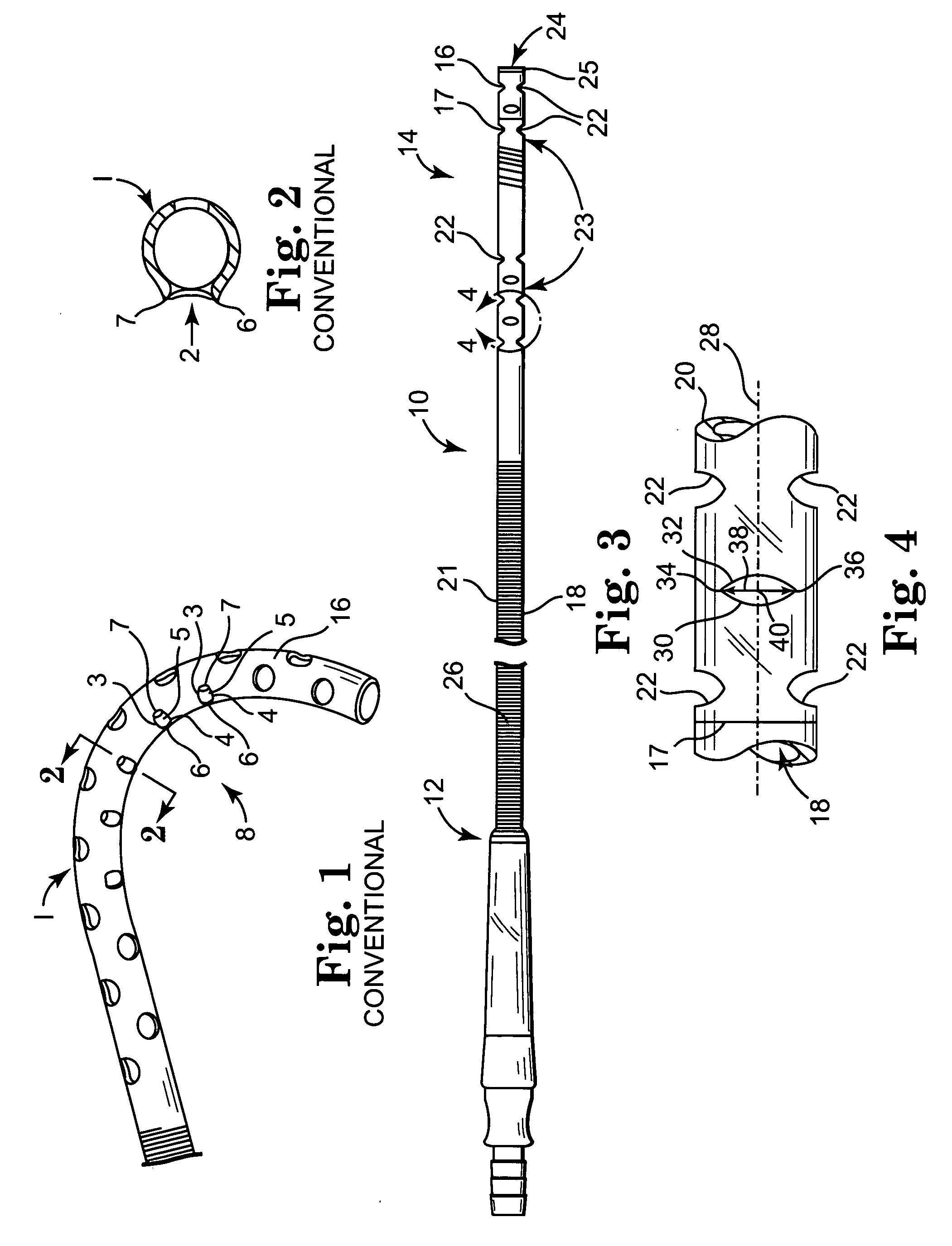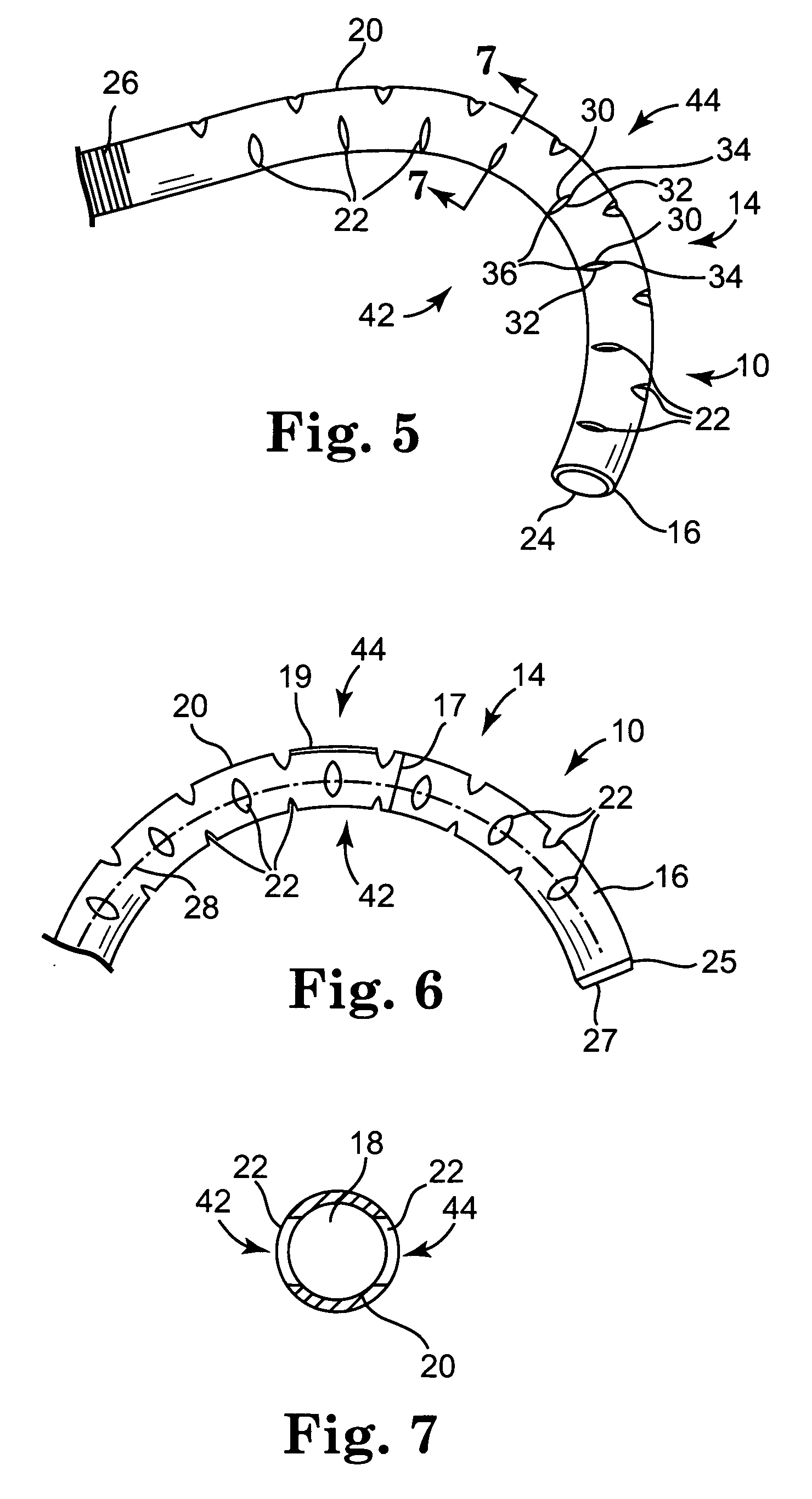Kink resistant cannula having buckle resistant apertures
a cannula and buckle technology, applied in the field of medical cannulas, can solve the problems of unfavorable buckle phenomenon, damage to the side of the vessel wall in the patient, and more trauma to the surrounding tissu
- Summary
- Abstract
- Description
- Claims
- Application Information
AI Technical Summary
Benefits of technology
Problems solved by technology
Method used
Image
Examples
Embodiment Construction
[0040] A conventional catheter or cannula 1 having a flexible tip 16 is shown in FIG. 1. The tip 16 has a plurality of holes 5 that are shown buckling causing an edge to push outward like a scoop, from the profile of the tip at portions 6 and 7. The sides 3, 4 of individual apertures 5 on the concave side 8 are necessarily pushed toward one another as the cannula 1 is bent. As the sides 3, 4 close toward one another, the apertures 5 may buckle outward at other sides 6, 7 as shown in FIG. 2.
[0041] Referring to FIG. 3, a catheter or cannula, shown as, but not limited to, venous cannula 10 has a body 21 with a proximal end 12, a distal end 14 and a tip 16. The tip 16 is located at the distal end 14 of the cannula 10 and a lumen 18 formed in the body 21 extends through the cannula 10 from the proximal end 12 to the tip 16. The wall 20 has a circumference 17.
[0042] The lumen 18 may be open at the proximal end 12 to be connected to a cardiac bypass system such as a heart-lung machine. I...
PUM
 Login to View More
Login to View More Abstract
Description
Claims
Application Information
 Login to View More
Login to View More - R&D
- Intellectual Property
- Life Sciences
- Materials
- Tech Scout
- Unparalleled Data Quality
- Higher Quality Content
- 60% Fewer Hallucinations
Browse by: Latest US Patents, China's latest patents, Technical Efficacy Thesaurus, Application Domain, Technology Topic, Popular Technical Reports.
© 2025 PatSnap. All rights reserved.Legal|Privacy policy|Modern Slavery Act Transparency Statement|Sitemap|About US| Contact US: help@patsnap.com



